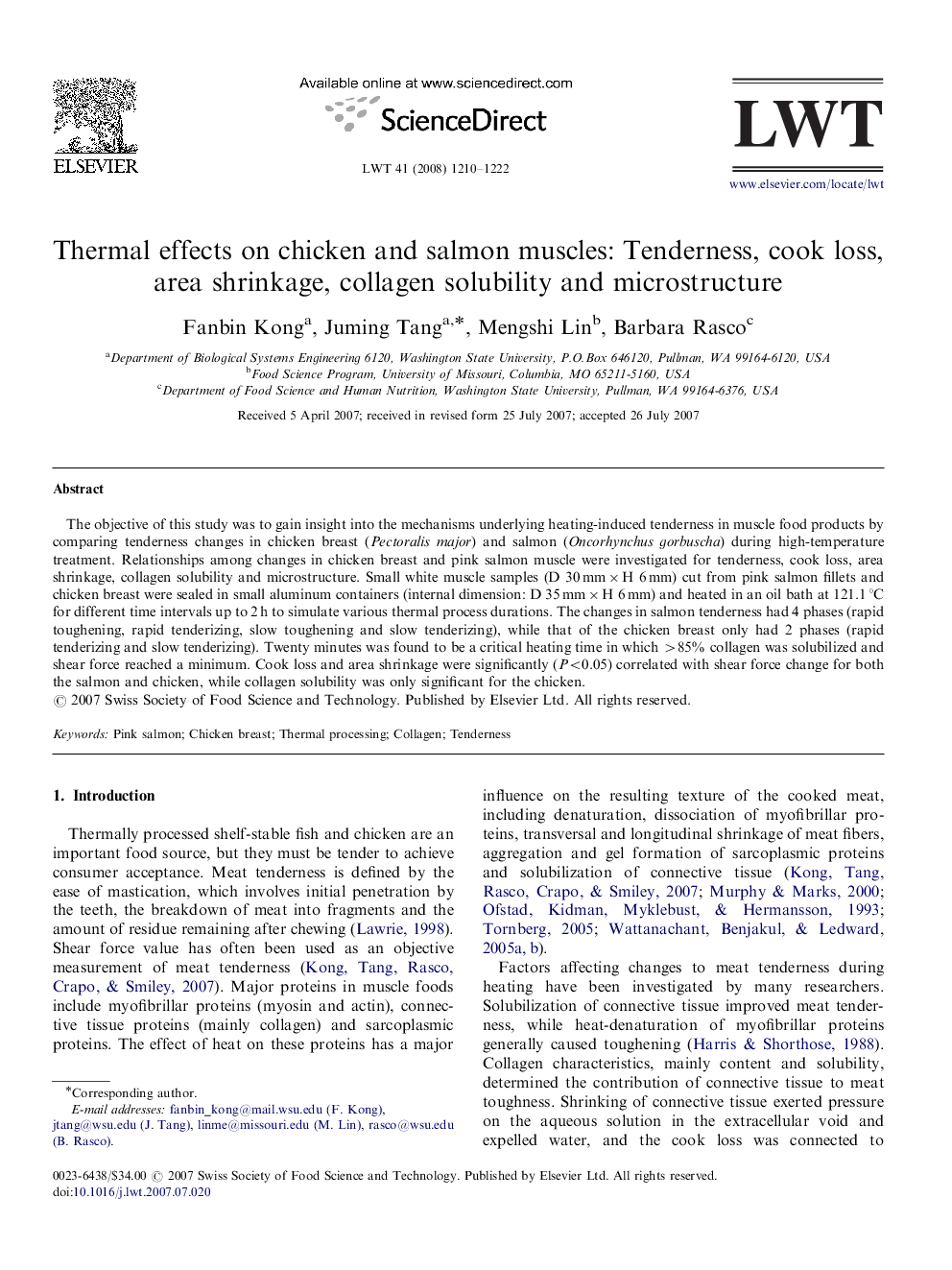| Article ID | Journal | Published Year | Pages | File Type |
|---|---|---|---|---|
| 4565177 | LWT - Food Science and Technology | 2008 | 13 Pages |
The objective of this study was to gain insight into the mechanisms underlying heating-induced tenderness in muscle food products by comparing tenderness changes in chicken breast (Pectoralis major) and salmon (Oncorhynchus gorbuscha) during high-temperature treatment. Relationships among changes in chicken breast and pink salmon muscle were investigated for tenderness, cook loss, area shrinkage, collagen solubility and microstructure. Small white muscle samples (D 30 mm×H 6 mm) cut from pink salmon fillets and chicken breast were sealed in small aluminum containers (internal dimension: D 35 mm×H 6 mm) and heated in an oil bath at 121.1 °C for different time intervals up to 2 h to simulate various thermal process durations. The changes in salmon tenderness had 4 phases (rapid toughening, rapid tenderizing, slow toughening and slow tenderizing), while that of the chicken breast only had 2 phases (rapid tenderizing and slow tenderizing). Twenty minutes was found to be a critical heating time in which >85% collagen was solubilized and shear force reached a minimum. Cook loss and area shrinkage were significantly (P<0.05) correlated with shear force change for both the salmon and chicken, while collagen solubility was only significant for the chicken.
